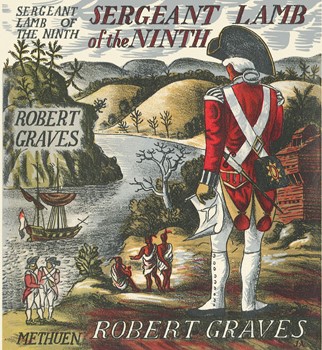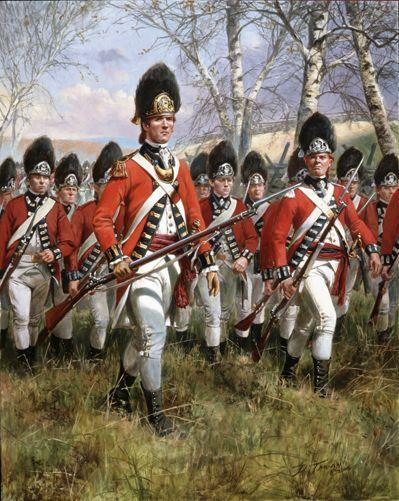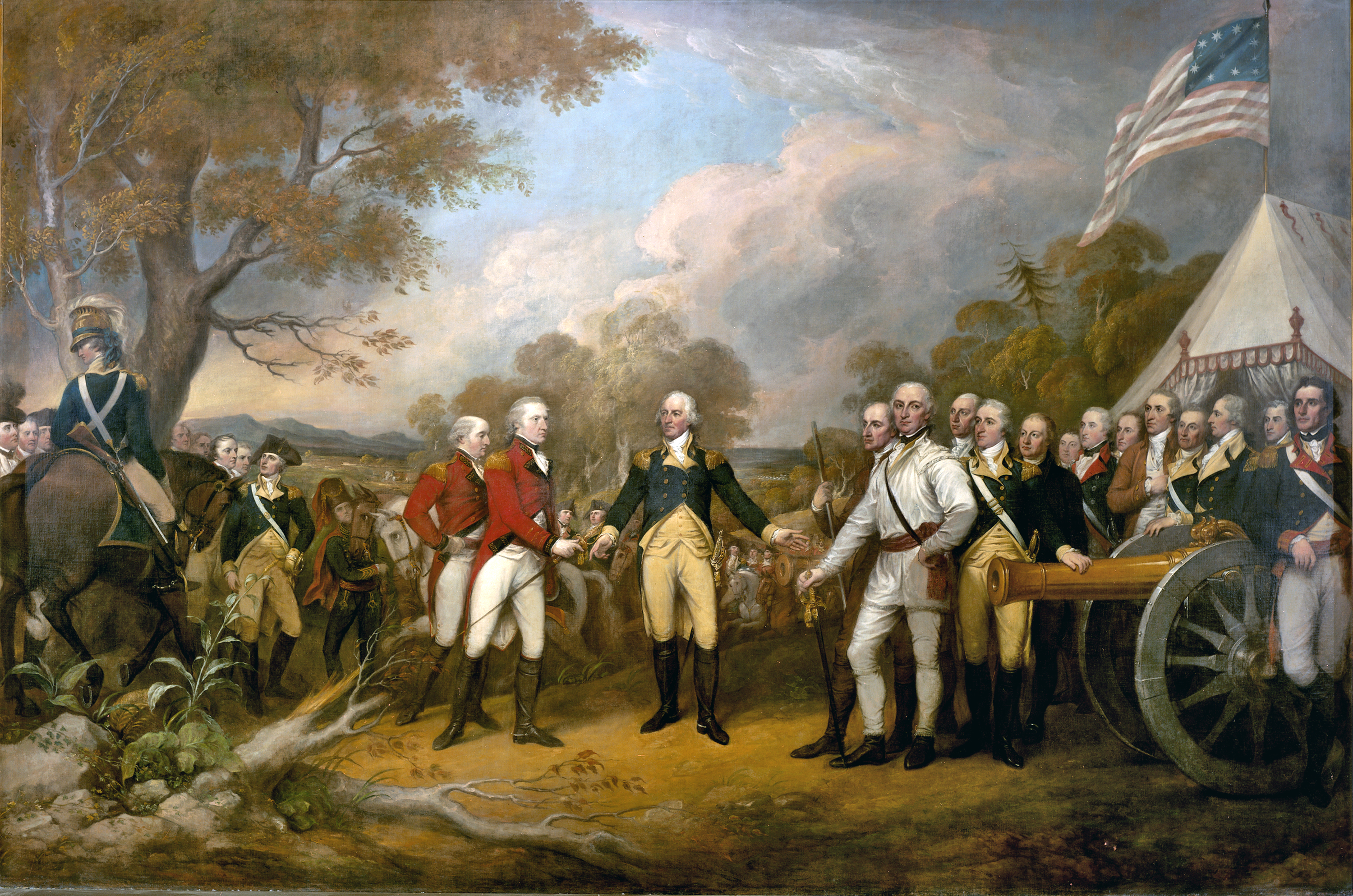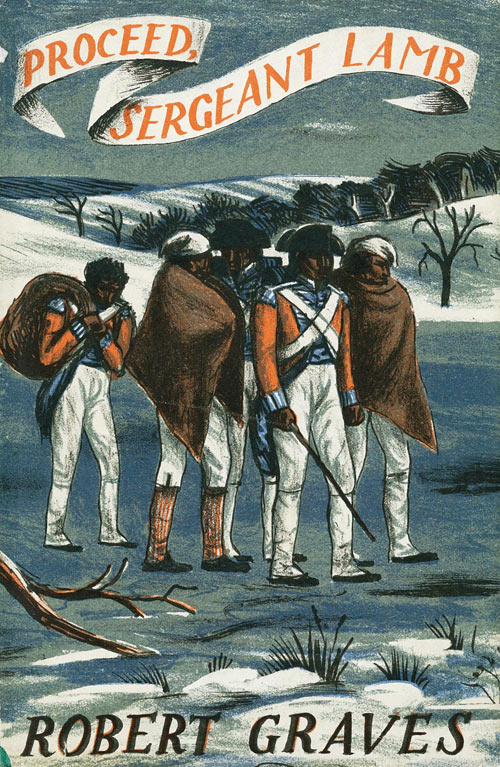
Today, the 4th of July is celebrated in North America as Independence Day. This marks the date in 1776 when the United States of America was formally declared as a separate nation , and allegiance to the British Crown was repudiated.
It may be Surprising to hear that a local man, Roger Lamb, is something of a hero of the American revolutionary War, though on the British side. He afterwards wrote a memoir of his experiences in the war (and as a prisoner), which is now considered a classic of its kind. He also authored an autobiography, which features some fascinating details of Dublin life, and the Docks area as it was in the late 1700’s. We will be publishing some extracts from this shortly , but for now enjoy this brief account of Roger Lambs American revolutionary war experiences.

Royal Welsh Fusiliers 1776
He was born in 1756 and grew up somewhere in the vicinity of Dublin Port. We are unsure of exactly where though it has been suggested that it was on North Wall. He was the youngest of 11 children, and despite an older brother’s death in Naval service, from a young age Roger dreamed of a life at sea. His father discouraged him from this, and eventually he found himself in the British Army. This was not necessarily a career choice he was pursuing and his route into military service was not an unheard of one. In his own words: “I had now arrived at a remarkable epoch in my life…It was on the 10th of August, 1773, that in my 17th year, when being seduced to gambling by some evil companions, with whom I thoughtlessly associated, I lost my little all. Forgetful of all the moral lessons so anxiously inculated in my mind by my father, I was blind to my danger, and united with those who became my corruptors, and worst enemies. Afraid to return and tell my father of my indiscretions, who would have rebuked and forgiven me , I shrank from my best hope , parental admonition , and formed the resolution of entering for a soldier “.
He marched to Waterford to join the 9th Foot Regiment , a journey which took six days. His autobiography describes in detail the drilling and discipline, and recalls crying the first time he witnessed a fellow recruit being flogged (75 lashes). A mass desertion was contemplated by some of the men but the fear of such punishment dissuaded them. The following year he was stationed in the North of Ireland and in 1775 was posted to Dublin.
That year would also see the outbreak of what is now commonly referred to as the American War of Independence, which saw thirteen colonies challenge the legitimacy of British Rule . These would soon declare themselves independent , and proclaim themselves the United States of America. Hostilities would quickly escalate and continue until 1783, with the now ‘Sergeant’ Roger Lamb finding himself at the heart of the conflict for the next 8 years of his life. It was to be an eventful period for the young man, who would see combat in two major military campaigns and also be captured, imprisoned and escaped on four separate occasions.
Initially posted to Canada, he served under General Burgoyne who invaded the colonies from the north, with the intention of driving a wedge between New England and the southern colonies. However, as the force moved southwards the revolutionaries managed to block his supply routes preventing their progress, and Burgoyne eventually surrendered at the battle of Saratoga in 1777. Lamb was amongst those captured, and also amongst a large number which escaped, and having made his way to New York was assigned to the Royal Welsh Fusiliers.

Surrender of General Burgoyne , by John Trumbell , now hangs in the Capitol Building Washington DC.
An online history of Prison camps from the Revolutionary War summarised the experiences very accurately as follows :
“Sergeant Roger Lamb, an Irishman who served with the Twenty-third Regiment of Welsh Fusiliers, made his own luck and his own misfortune by repeatedly escaping imprisonment and returning to the field where he would be imprisoned again. He fought under Burgoyne and was first captured at Saratoga. He escaped before the Appalachian march and joined Major Andre’s forces. Then he fought under Cornwallis at Yorktown and was captured again and again he escaped. He reached Frederick, Maryland, where he was promptly captured and held in the Hessian Barracks prison. From there he moved to Winchester, Virginia, for a brief stay and then on to York.
His officers warned him he’d be put in jail in Winchester on account of his penchant for flight, and suggested he squirrel himself away in the hospital which would delay his move to York by a few weeks and keep him out of Revolutionary cross-hairs. When he finally reached Camp Security, his old comrades from the Ninth Regiment in Burgoyne’s army were ready for him. They had heard he was coming and so secured a pass for him from the American commander. They even built him a hut at Camp Indulgence. Thus Lamb, unlike the rest of Cornwallis’ troops and despite his mastery of the art of escape, got the same kid glove treatment granted the relatively settled Burgoyne prisoners.


Of course he tried to rouse them into escaping and rejoining the British forces in New York, but they’d been prisoners going on five years by the time Lamb arrived. They were treated well, had families and jobs. They just weren’t up for rejoining the fight. They did help Lamb escape this prison too, though. He and seven of Cornwallis’ men from the Twenty-third Regiment successfully fled in March of 1782 and joined Sir Guy Charlton’s troops in New York City.
The war was basically over by then. Yorktown was the last major battle and preliminary peace negotiations were already in the works in 1782. The Treaty of Paris, signed on September 3, 1783, formally ended the war. Lamb sailed for Portsmouth in December 1783. Upon his return he received his discharge and went back home to Dublin where he became a teacher and started a family.”
Having returned to Dublin he married in 1786. He took up a position as Master at the Methodist Free School in Whitefriar Street, which he would maintain for thirty years. He would author two books, one an account of his War of Independence days – “An Original and Authentic Journal of Occurrences During the Late American War” (Published 1809) and “Memoir of his own life” (Published 1811).
The Poet and author Robert Graves, best known for “I Claudius”, used Lambs memoirs as the basis for two fictional novels published in 1940 and 1941. (Graves had himself been a member of the Royal Welsh Fusiliers was seriously injured at the Battle of the Somme and shell-shocked). It may have been a case of Truth is stranger than fiction, as “Sergeant Lamb of the Ninth” and “Proceed, Sergeant Lamb” were both reasonably well received , though some reviewers were more taken with the period detail and setting rather than the narrative (ironic considering it was largely factually based).

Roger Lamb died in 1830. His two published books make very interesting reading. “An Original and Authentic Journal of Occurrences During the Late American War” is considered an important record of the period and is of major historical significance. As well as describing his own time during the revolutionary war he also analyses the broader conflict, and there is also an interesting section devoted to the issue of Black slavery, with Lamb highlighting the hypocrisy of a nation proclaiming freedom yet tolerating this brutality. “Memoir of his own life” contains fascinating snippets of Dublin life from the late 1700’s, including the authors own near drowning in the Liffey , the execution of pirates and the duelling prevalent at that time.
We will be publishing some of these excerpts in the near future.
For corrections, clarifications or further information contact: eastwallhiostory@gmail.com
Sources :
(An omnibus edition is available from http://www.ballindalloch-press.com/
Summary of Lambs military career sourced from http://www.thehistoryblog.com/



